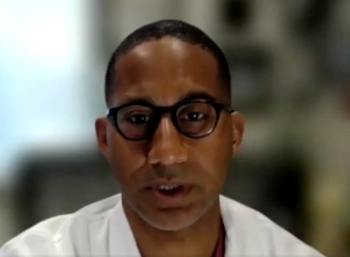
Analyzing the Cost-Effectiveness of Entresto in Heart Failure
The findings reported in JAMA Cardiology suggest that Entresto is more cost effective in patients with heart failure with lower ejection fractions.
Treatment with
These findings come as the number of people in the U.S. with heart failure (HF) is expected to climb. It is a chronic condition affecting more than
HF occurs when the heart cannot pump enough blood to meet the body's needs HF is categorized depending on an individual’s
Entresto is among several new treatment for HF. Previous trials, including PARADIGM-HF, showed that it is effective and cost-effective in reducing the risk of cardiovascular death or hospitalization in patients with heart failure with reduced ejection fraction (HFrEF). Those findings are reflected in U.S. treatment guidelines that now strongly recommend Entresto as a first-line treatment for HFrEF. Another trial, called PARAGON-HF, extended the evaluation of Entresto to patients with heart failure with preserved ejection fraction (HFpEF).
In 2021, the FDA expanded Entresto’s indications to include all adult patients with chronic HF but noted that the benefits are most evident in patients with below-normal ejection fraction. However, it remains unclear what level of ejection fraction is considered too low. Recent guidelines offer weaker recommendations for Entresto in patients with HFpEF or mildly reduced ejection fraction (HFmrEF). Economic analyses for pharmacologic therapies in these patient groups is lacking.
In this JAMA Cardiology
The results showed that for patients with EFs of 60% or less, Entresto added 0.53 quality-adjusted life-years (QALYs) at an incremental lifetime cost of $40,892 compared to RASi, generating an ICER of $76,852 per QALY. Among chronic heart failure patients with EFs of 60% or less, Entresto was shown to have intermediate economic value at a cost of $10,242 or less per year, of high economic value at $3,673 or less per year, and cost-saving at $338 or less per year.
Bhatt and his colleagues calculated ICERs of:
- $67,331 per QALY for EFs of 55% or less,
- $59,614 per QALY for EFs of 50% or less, and
- $56,786 per QALY for EFs of 45% or less.
Treatment with Entresto in patients with EFs of 45% or greater yielded an ICER of $127,172 per QALY gained. For those with EFs of 45%-55%, the ICER was $100,388 per QALY gained, and for those with EFs of 45%-50%, the ICER was $84,291 per QALY gained. The analysis included a total of 13,264 patients.
Cost-effectiveness modeling provided ICERs for treatment with Entresto consistent with high economic value for patients with reduced and mildly reduced EFs (less than or equal to 50%) and at least intermediate value for those with an EF of 60% or less.
This study had several limitations. Patients were selected based on their ability to tolerate therapy, which may have introduced bias. Adverse events were not considered in the model, but symptomatic hypotension was more common with Entresto. The distribution of EF may not fully reflect HF patients in the US. Value definitions may vary, and different thresholds could change conclusions. The model did not account for variable adherence to treatments, but evidence suggests higher rates of discontinuation of Entresto among older adults.
Entresto treatment was found to be more cost-effective for those with lower ejection fraction. This estimation was based on the current wholesale acquisition cost price of Entresto without any discounts. These findings may have implications for payers’ coverage decisions and updates to current treatment guidelines for clinical practice. Bhatt and his colleagues noted that “costs likely vary significantly across payers, negotiated rebates and discounts, and various arrangements with pharmacy benefit managers and other intermediaries, making it difficult to estimate the actual cost of therapy in the U.S.”
Newsletter
Get the latest industry news, event updates, and more from Managed healthcare Executive.






















































